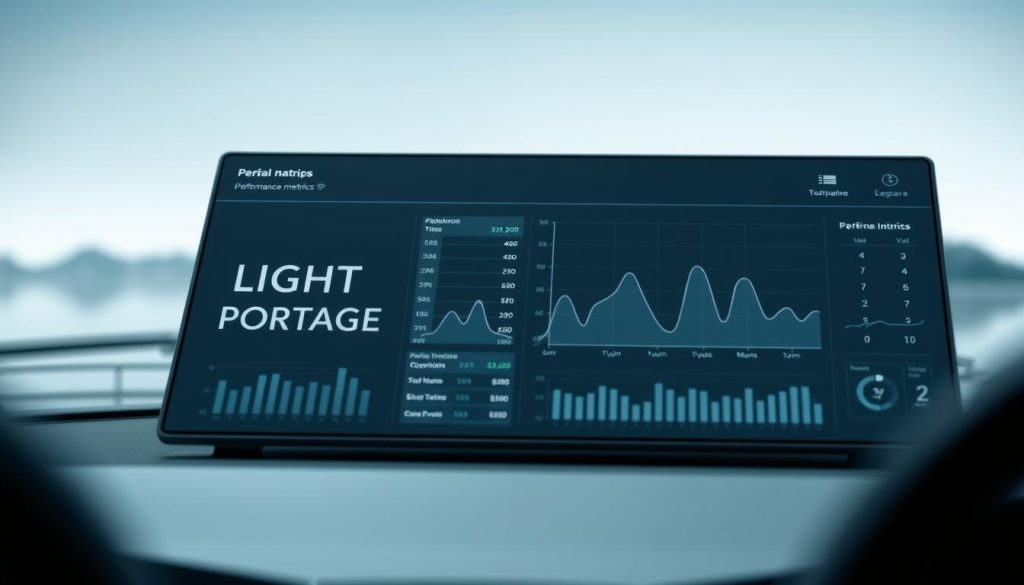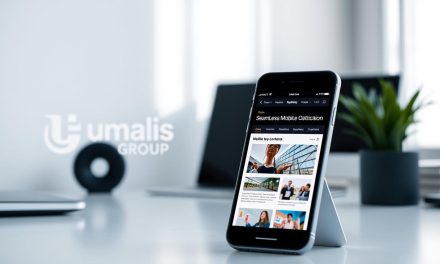We know the leap to independence feels risky. In Paris, a consultant once told us she lost a client after a missed deadline. She then built a simple system to measure delivery speed and outcomes. That small change steadied her calendar and gave clients calm confidence.
This section shows how simple measures bring steady results. You will learn how to turn raw signals into clear actions. We focus on methods used in safety work—star ratings for infrastructure and crash risk maps—to make concepts concrete.
Our aim is practical. We teach you to use graphs and small dashboards to catch shifts early. That approach helps you protect time, reputation, and income while keeping your autonomy with each client and employee relationship.
By the end, you will have a calm, repeatable way to show progress to any organization and to ask for better rates with evidence.
Table of Contents
Key Takeaways
- Small, regular measures reduce uncertainty and support steady income.
- Translate complex signals into simple actions with charts and star ratings.
- Early warning via trends helps you fix issues before they grow.
- Documenting plans and outcomes builds trust with clients and employees.
- Adopt enterprise-style discipline to keep your freelance practice resilient.
Understand today’s need for continuous performance tracking
Short, regular check-ins give a truer view of how teams advance. Top-down annual reviews miss the day-to-day rhythms of hybrid and cross-functional work. Projects shift, stakeholders rotate, and remote members change context fast.
77% of HR leaders say one-off evaluations no longer capture real contribution (Select Software Reviews, 2023). That gap pushes many organizations to prefer continuous approaches that build a fuller, fairer picture over time.
For independent professionals, adopting simple employee performance tracking rituals helps you integrate with client expectations. Use brief touchpoints, goal-linked notes, and shared metrics so managers see progress without extra paperwork.
How this helps you and teams
- Replace yearly performance reviews with frequent, goal-focused check-ins to improve decision-making within organization workflows.
- Track employee performance with lightweight rituals that fit distributed collaboration and rotating stakeholders.
- Make feedback regular and ethical: transparent metrics, shared expectations, and clear coaching moments.
Result: fewer surprises, stronger relationships, and steady momentum. You show clients measurable progress and build trust while keeping administrative overhead low.
Business benefits of employee performance tracking for organizations in France
When goals and feedback are visible, teams gain confidence and daily work becomes more predictable.
Ongoing review turns feedback into a steady dialogue. That steady dialogue helps employees feel valued and encourages them to take ownership of outcomes. Simple check-ins make expectations explicit and reduce misunderstanding across hybrid teams.
Frequent notes and shared goals speed development. They surface strengths and gaps so you can guide learning where it matters. This lowers friction and raises morale, so employees feel supported and more productive.
Drive agility and early correction
- Short review cycles reveal bottlenecks quickly and allow fast course-corrections.
- Transparent status signals help you and client teams adapt before deadlines or budgets are at risk.
- Simple dashboards create a common view of risk and progress for organizations and independents.
Practical result: clear criteria, constructive feedback, and visible goals raise trust with French stakeholders. You can present a calm, evidence-based case for continuous improvement that respects people and sustains steady delivery.
Goal setting that works: from OKRs to SMART goals
Clear objectives help people focus on impact rather than activity.
We guide you to choose an approach that fits the role and the organization. OKRs suit outcome-focused work: one objective with 3–5 measurable key results. SMART goals work well for operational tasks that need specific, time-bound steps.
Align individual goals with organizational objectives and track progress
Co-create each goal with the employee so they take ownership. Link one clear goal to a business outcome and add leading and lagging indicators.
- Use statuses: on track, delayed, off track — update weekly.
- Example: reduce escalations by 20% while keeping cycle time stable.
- Record simple evidence: counts, sample records, or customer scores to track progress.
Map strengths and weaknesses to personalized development plans
Turn strengths into stretch work and address weaknesses with short learning sprints.
Match training, mentoring, or task swaps directly to the goal so employees achieve measurable growth.
Result: consistent goal reviews, clearer employee performance signals, and disciplined management that executives recognize.
How to implement a performance tracking system step by step
![]()
Start small: a clear set of roles, a cadence, and visible goals will do more than complex software. Define the minimum artifacts you need: goal sheets, a shared agenda, and simple status labels.
Define roles and cadence
Decide who owns each goal and who reviews progress. Agree on a rhythm that fits your organisation: weekly or biweekly 1:1s, with quarterly or semi‑annual reviews.
Establish feedback rituals
- Shared agendas for 1:1s so feedback stays focused.
- Carry forward action items until complete to prevent loss of commitments.
- Use short notes tied to goals to document decisions and next steps.
Create a transparent system employees trust
Ethics matter: monitoring must aid development, not surveil. Focus on progress, blockers, and strengths weaknesses so employees feel safe to learn.
Start with simple tools—docs, sheets, or a lightweight dashboard. Clarify responsibilities: managers facilitate, individuals self‑report, and you close the loop by reviewing outcomes and updating development plans.
Run the continuous performance management cycle
A clear four-step cadence helps managers turn daily signals into coaching moments. Plan, execute, review and iterate with short rituals that fit your workflow and respect people.
Plan, execute, review, and iterate within your management cycle
Plan by setting one clear goal and expected evidence. Keep goals ambitious but realistic; 70–80% completion on stretch goals often means healthy learning.
Execute with brief 1:1s—weekly or biweekly—for quick updates and to capture blockers. Use concise notes so managers can coach from shared data rather than memory.
Review outcomes quarterly to spot patterns. Compare results to intent and record what changed, why, and what you will try next.
Iterate by adjusting the management system: carry action items automatically, summarize trends, and preserve context so the team keeps momentum as priorities shift.
- Keep cycles short to reduce overhead.
- Document small iterations after each loop.
- Use a platform or workflow that auto-carries action items and preserves context.
Result: a calm, evidence-based rhythm that helps employees achieve steady development and builds trust across teams and clients in France.
Metrics that matter: reliable indicators, trend lines, and impact

Choose a handful of indicators that reflect real business value, not busywork.
Start with a short list: quality, timeliness, customer outcomes, and learning velocity. These metrics help you see value rather than volume. Keep the set stable so employees and managers know what to influence.
From activity to outcomes: choose metrics aligned to business goals
Move beyond counts. Link each metric to a clear goal and a business outcome. Pair leading signs—cycle time or blocker age—with lagging outcomes like satisfaction, retention, or revenue contribution.
We recommend:
- Few, balanced indicators that reflect value and learning.
- Brief narrative context from managers to explain numbers.
- Documented countermeasures for hotspots, using safety analytics methods.
Use graphs and dashboards to surface trends and trigger early action
Simple graphs expose momentum and drift. Dashboards, heatmaps, and progress statuses let you spot new anomalies and persistent high-risk areas fast.
When you pair visuals with short notes, you can act calmly: celebrate gains, address root causes, and update development plans. This approach strengthens employee engagement and supports steady management decisions across the organization and teams.
Tools to track employee performance: selecting the right platform
Selecting a system is about workflow fit, not feature lists alone. Choose a platform that joins goals, reviews, 1:1s, and dashboards so work and evidence stay in one place.
What to look for in performance management software
Core selection criteria: user-friendly design, flexible workflows, clear permissioning, and integrations with tools you already use.
Also consider: strong analytics, exportable reports for clients, privacy controls, and pricing that fits small teams and independents.
Notable solutions and quick strengths
- 15Five: weekly check-ins and objectives that keep short rhythms.
- Synergita: automated reviews, 360 feedback, and analytics dashboards.
- Performly: continuous feedback and goal-centred engagement.
- Leapsome: connects goals, reviews, engagement, and learning paths.
- Reflektive: real-time feedback with goal management and analytics.
- Performyard: flexible review models and goal tracking for varied teams.
« Request demo sessions to run your scenarios; a short pilot reveals if a platform reduces time-to-insight. »
Start with a pilot: import a few goals, run one cycle, review dashboards, then scale if adoption is natural.
| Feature | Why it matters | What to test in a demo |
|---|---|---|
| Goals & status | Shows progress and flags on track / delayed / off track | Create sample goals and update statuses in a live demo |
| Reviews & 1:1s | Keeps evidence and conversations linked to goals | Run a mock review and export notes |
| Dashboards & analytics | Surfaces trend lines and heatmaps for early action | View trend charts and export a report for a client |
| Privacy & exports | Ensures GDPR compliance and clean client reports | Check role permissions and export formats |
Practical tip: always request demo sessions and test real workflows. Use that trial to confirm the platform helps you tell a coherent story about progress and learning, not just store data.
Compliance, privacy, and ethics: building trust in your management system
Trust in your system starts with clear rules about data use and respect for people. In France, compliance and respect are inseparable: follow GDPR principles and design processes that put dignity first.
Collect only what you need. Define purposes, set retention limits, and restrict access. That reduces risk and makes employees feel safe to engage.
GDPR-aligned data practices and avoiding surveillance
Limit collection, document legal bases, and state retention periods. Identify controllers and processors when you use third-party tools.
Avoid routine productivity monitoring that feels like surveillance. Focus on agreed outcomes and shared metrics so employees feel valued and secure.
Fairness in evaluations and evidence-based decisions
Use consistent criteria and documented evidence for reviews and promotions. Structured rubrics and calibration sessions reduce bias.
Log the rationale for key decisions. Keep accurate records, secure audit trails, and link changes to policy for clarity and legal safety.
« The best ethical systems treat compliance as a baseline and dignity as the goal. »
- Include consent notices and data-subject rights processes.
- Train managers to separate observations from assumptions and to give respectful feedback.
- Align records with compensation and promotion practices, and prevent retaliation.
| Area | Good practice | Why it matters |
|---|---|---|
| Data minimization | Collect only necessary fields and metrics | Reduces GDPR risk and builds employee trust |
| Access control | Role-based permissions and audit logs | Makes decisions transparent and defends against misuse |
| Evaluation fairness | Rubrics, calibration, and documented evidence | Helps withstand scrutiny and prevents bias |
| Third-party tools | Define controller/processor roles and get vendor assurances | Ensures legal compliance and secure data handling |
Ethical practices are strategic: they protect you legally and improve employee engagement and long-term collaboration. Build a system that people trust, and it will support steady development across your organization.
Conclusion
Finish by turning short, repeatable rituals into clear evidence you can present with confidence.
Continuous practice gives you a holistic view and helps you coach with facts. Define two or three goals, set a weekly or biweekly check‑in, and use a single dashboard to capture trends. Choose a small platform or tools that centralize goals and reviews so you can request demo access and test real workflows.
Keep the system light and ethical. Use concise notes, fair rubrics, and respectful feedback to sustain engagement and protect your time and reputation. These solutions help you track employee performance without adding bureaucracy.
In short, a clear cadence, aligned goals, and calm evidence create steady employee performance and stronger client relationships within organization contexts you serve.
FAQ
Why are annual reviews no longer enough for hybrid teams?
Annual reviews often miss ongoing changes in goals, workload and skills. Modern teams work across locations and timelines; they need regular check-ins, short-cycle goal adjustments, and continuous feedback so managers can detect issues early and support growth. This approach helps employees feel valued and keeps outcomes aligned with business priorities.
What business benefits come from a continuous employee performance approach in France?
Organizations gain higher engagement, faster development, and clearer accountability. Regular conversations increase ownership, reduce turnover, and allow leaders to spot bottlenecks sooner. In France, combining continuous practices with GDPR-compliant processes builds trust while improving agility and organizational stability.
How do I align individual goals with company objectives?
Start by translating strategic priorities into measurable team goals (OKRs or SMART). Then cascade clear expectations to each role and set regular checkpoints to review progress. Use shared dashboards so every employee can see how their work contributes to wider outcomes and adjust plans when needed.
How can strengths and weaknesses be mapped into development plans?
Use a simple assessment during 1:1s to identify core skills and gaps. Pair that insight with personalized learning paths and stretch assignments. Track milestones and celebrate small wins to maintain motivation and ensure development aligns with career goals.
What are the first steps to implement a management system?
Define the system’s cadence (weekly check-ins, quarterly goals), set clear roles for managers and employees, and choose measurable indicators tied to outcomes. Communicate the process, pilot with one team, then iterate based on feedback to build trust and adoption.
Which feedback rituals should we establish?
Combine recurring 1:1s, brief weekly check-ins, quarterly reviews, and ad-hoc feedback after key milestones. Keep conversations forward-looking and evidence-based. This rhythm supports development, clarifies expectations, and reduces surprises during formal evaluations.
How do we make a tracking system transparent and trustworthy?
Share clear data policies, explain what metrics mean, and grant employees access to their own records. Ensure managers document evidence and use qualitative notes alongside numbers. Transparency, coupled with fair evaluation criteria, builds confidence across teams.
What metrics should we prioritize to measure impact?
Focus on outcome-oriented indicators: goal completion rate, customer satisfaction, cycle time, and quality measures. Supplement with engagement signals such as regular feedback frequency and development progress. Choose a small set of meaningful metrics aligned to strategy.
How can dashboards help managers act earlier?
Dashboards surface trend lines and anomalies so leaders spot declining momentum or workload imbalances. Visual signals trigger timely 1:1s, reallocation of resources, or coaching interventions, preventing minor issues from growing into systemic problems.
What features matter when selecting management software?
Look for goal alignment, easy 1:1 and feedback workflows, secure data controls, and clear reporting. Integration with HR systems and calendar tools improves adoption. Choose platforms that support continuous conversations and evidence-based reviews.
Are there established platforms we can evaluate?
Yes. Consider solutions like 15Five, Leapsome, Reflektive, Performyard and Synergita. Each offers different strengths in goal setting, feedback loops and analytics—pilot two to see which best matches your rhythm and culture.
How do we ensure GDPR compliance and ethical use of data?
Limit data collection to necessary metrics, define retention policies, obtain clear consent, and provide access controls. Avoid covert surveillance; focus on development evidence and anonymized aggregated reports for trend analysis to stay both legal and ethical.
How can we make evaluations fair and evidence-based?
Require documented examples in reviews, train managers on bias awareness, and use multi-source feedback where appropriate. Establish objective criteria for ratings and link outcomes to verified results rather than impressions alone.
How does continuous management help employees feel secure when they move to independent work?
Ongoing feedback and clear development plans build skills and confidence needed for independent roles. A transparent support system reassures professionals that their progress is visible and that they receive coaching, which smooths transitions toward autonomy.




